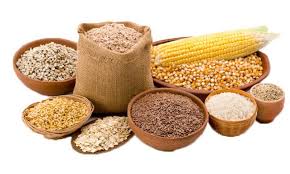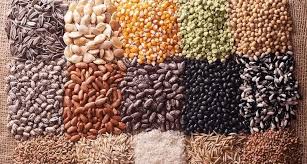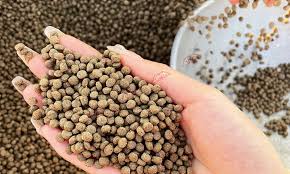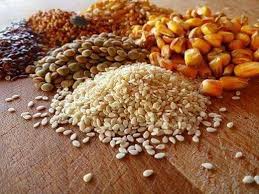Feed formulation is the process of quantifying the amounts of feed ingredients required to form a uniform mixture (diet) for poultry and other livestock that supplies all their nutrient requirements.
Feed typically represents 65-75% of total live production costs for most types of poultry globally. A simple mistake in diet formulation can be extremely costly for a producer. Successful feed formulation requires a thorough understanding of the:
- Nutrient requirements of the class of livestock (e.g., egg layers, meat chickens, swine).
- Nutrient composition of feed ingredients and their constraints in terms of nutrition and processing.
- Cost and availability of ingredients.
Most large-scale farmers have their own nutritionists and feed mills, while smaller operations rely on consultant nutritionists and commercial feed mills for their feeds. Accurate formulation is essential, as mistakes made after feeds are formulated can lead to significant expenses.
Typical Formulation
Feed formulation is both a science and an art, requiring knowledge of feed and poultry nutrition, along with patience and innovation. Typical formulations specify the amounts of each ingredient in the diet and provide the nutrient composition.
The nutrient profile of the diet indicates its adequacy for the intended class of poultry or livestock. Energy values are typically shown as metabolisable energy (kcal or MJ ME/kg feed), alongside protein content. Digestible amino acids, including essential ones like methionine, are often provided.
A comprehensive amino acid database, such as one that includes analyses of over 140 raw materials, offers digestibility coefficients and essential nutrient information for poultry and swine.
Read Also: Basic things you should know about Poultry Farming
Livestock Feed Formulation Methods

Several conventional feed formulation methods are widely recognized:
1. Pearson Square Method: This method is relatively simple and effective for balancing protein requirements but has limitations, including its applicability to only two requirements at once and reduced attention to other nutrients like vitamins and minerals.
2. Simultaneous Equation Method: This method balances nutrients using algebraic equations, addressing deficiencies by adjusting feed proportions. It allows balancing for both protein and energy and can handle more than two ingredients, making it useful for more complex rations.
3. Two-By-Two Matrix Method: This method uses a matrix to solve for two nutrient requirements using two feed ingredients.
4. Trial and Error Method: Commonly used in developing nations, this method involves manipulating the formulation until the desired nutrient requirements are met. It is popular for swine and poultry but requires careful calculation of minerals like calcium and phosphorus to avoid deficiencies such as osteomalacia or rickets.
5. Imami Method: This educational approach allows farmers to balance simple rations using a common calculator with high accuracy, especially for those without access to computers.
6. Linear Programming (LP) Method: Also known as least-cost feed formulation, this computerized method uses equations to find the least-cost combination of ingredients. It guarantees an optimal solution and evaluates all possible alternatives.
Merits of the Methods
The Pearson Square and Simultaneous Equation methods are easy to use for beginners and experienced feed millers. The Simultaneous Equation method offers advantages over Pearson by allowing the balancing of both protein and energy and considering more than two feed ingredients.
Limitations of Pearson Square and Simultaneous Equation Methods
Both methods satisfy only one nutrient requirement and use only two feed ingredients at a time. Additionally, the level of the nutrient being computed must fall between the concentrations of the two feed ingredients used.
Advantages of the Linear Programming Method
The LP method provides several benefits:
1. Scientific Approach: It allows for a systematic analysis of feed formulation problems.
2. Quality of Decision: LP provides precise solutions, considering various system constraints.
3. Evaluation of Alternatives: It generates all possible solutions, selecting the optimal one.
4. Flexibility: LP can be applied to different scenarios, making it a flexible mathematical tool.
Disadvantages of Linear Programming
While highly effective, LP has several limitations:
1. Absence of Risk: It does not account for risks in the system.
2. Linear Relationship: LP only applies when the problem can be represented as a linear relationship, while some feed problems may require quadratic equations.
3. Constant Values: The coefficients of the objective and constraint functions must remain constant, which is not always possible in practice.
4. Fractional Solutions: LP may yield fractional results that need rounding, affecting the optimality of the solution.
5. Flexibility Limitation: Once quantified, it is difficult to incorporate changes into the system.
6. Multiplicity of Goals: Farms often have multiple conflicting goals, which LP does not address.
7. Complexity: LP may involve complex calculations requiring a computer, making assumptions that could impact the validity of the results.
The Art of Feed Formulation

Feed formulation demands in-depth knowledge of animal nutrition, especially nutrient requirements and ingredient composition. Nutritionists must also consider factors such as pellet quality, feed flow through the mill, and the gut health of the animals. In some regions, preferences for feed characteristics like color and particle size may influence feed purchases.
However, feed formulation is ultimately about economics, with different operations prioritizing factors such as feed conversion efficiency or least cost per unit of product output.
Making A Feed Formulation For Pigs
The expansion of the pig industry depends largely on the availability of good-quality pig feed in sufficient quantities and at affordable prices. Feed accounts for 60% to 70% of total production costs. Pigs are monogastric animals, meaning they require specific nutrients for optimal growth.
A. Quality of Good Pig Feed
1. Freshness: Pig food must be fresh and not stale.
2. Processing: It must be well-processed and packaged.
3. Digestibility: The feed must have high digestibility.
4. Growth Support: It must promote optimum growth and development.
5. Palatability: The feed must be attractive and palatable to pigs.
6. Availability: Ingredients must be readily available.
7. Affordability: The feed should be cost-effective.
8. Balanced Nutrients: It must contain balanced nutrients.
9. Non-mouldy: Feed must not be mouldy or contaminated.
B. Components of Pig Feed
- Carbohydrates
- Protein
- Fat and Oil
- Minerals
- Vitamins
- Water
C. Feed Ingredients for Pig Ration Formulation
1. Maize: A major source of energy with 3400 Kcal/kg and 10% protein. It must be properly dried before use.
2. Sorghum: An energy source (2500 Kcal/kg) used as a maize substitute.
3. Maize Offal: Contains 2500 Kcal/kg, with higher fiber than maize.
4. Wheat Offal: A by-product of wheat, providing 1800 Kcal/kg.
5. Cassava: Good energy source, with anti-nutritional factors that need drying before use.
6. Sweet Potato: Used boiled or dried to replace maize in diets.
7. Yams: Dried yam tubers or peel can be incorporated into feed.
8. Brewer’s Dried Grains: Low energy, high in fiber, and a complementary source of energy.
9. Palm Kernel Cake: A low-cost feed ingredient with 18% crude protein and 2000 Kcal/kg energy.
10. Fish Meal: High in animal protein, with 60–72% crude protein.
11. Groundnut Cake: Provides 45% crude protein and 2600 Kcal/kg.
12. Soybean Meal: A good source of protein (45% crude protein), replacing groundnut cake.
13. Bone Meal: Supplies calcium (37%) and phosphorus (17%).
14. Oyster Shell: Cheaper than bone meal and contains 35% calcium.
D. Nutrient Requirements for Different Growth Stages of Pigs
1. Protein Requirements: Piglets (18%), Growers (14-16%), Breeders (16-18%), Lactating (14-16%).
2. Energy Requirements: Piglets (2400-2600 Kcal/kg), Growers (2400-2500 Kcal/kg), Breeders (2400-2500 Kcal/kg), Lactating (2400-2600 Kcal/kg).
3. Fat Requirements: Piglets (3%), Growers (3.0-4.0%), Breeders (3.0-4.0%), Lactating (3.0-4.0%).
4. Crude Fiber Requirements: Piglets (3.0-4.0%), Growers (4.5-5.0%), Breeders (3.0-4.0%), Lactating (3.0-4.0%).
5. Calcium and Phosphorus Requirements: Piglets (0.45% Calcium, 0.3% Phosphorus), Growers (0.4-0.5% Calcium, 0.45% Phosphorus), Breeders (0.4-0.6% Calcium, 0.4-0.5% Phosphorus), Lactating (0.4-0.6% Calcium, 0.3-0.5% Phosphorus).
Note: This formulation is not a strict standard. Factors like ingredient availability, cost, pig health, and environmental conditions need to be considered during feed formulation.
Making A Formulation For Fish
Fish feed formulation applies nutritional principles to design diets that meet the specific needs of fish. The following terms are crucial in feed formulation: crude protein level, metabolizable energy (ME), digestible energy (DE), amino acid levels, crude fiber, and ash. Nutritional data for ingredients may vary due to environmental conditions, like seasonal changes.
Metabolizable Energy (ME) and Digestible Energy (DE)
These values are critical in formulating feed for fish, as they reflect the usable energy in the feed. Digestibility can be affected by factors like temperature. For instance, fish digestibility may be lower at 7°C compared to 11°C or 15°C.
Read Also: 9 Ways to Enhance the Growth Rate and Maximize Profits on Broiler Production
Steps in Feed Formulation

1. Balancing Crude Protein and Energy: Begin by calculating the crude protein and energy levels, using methods like trial and error or the square method.
2. Adjusting Nutrient Levels: Balance the feed with the least expensive ingredients to meet nutritional needs without overspending.
3. Checking Amino Acid Levels: Ensure that indispensable amino acids are adequately present in the formulation.
4. Optimizing Feed Ingredients: Different feed ingredients can be substituted based on cost, availability, and nutritional content.
Balancing Crude Protein
For example, using the square method, 47.5% rice bran and 52.5% soybean meal can be combined to create a diet with 25% crude protein. This technique can also be applied to adjust energy levels and amino acid content.
Feed formulation is essential in both pig and fish production, ensuring that animals receive the nutrients needed for growth, health, and reproduction. While there are standard guidelines, factors such as ingredient availability, cost, and environmental conditions must always be considered.
Do you have any questions, suggestions, or contributions? If so, please feel free to use the comment box below to share your thoughts. We also encourage you to kindly share this information with others who might benefit from it. Since we can’t reach everyone at once, we truly appreciate your help in spreading the word. Thank you so much for your support and for sharing!
Read Also: Old Paper Recycling Process Complete Guide

